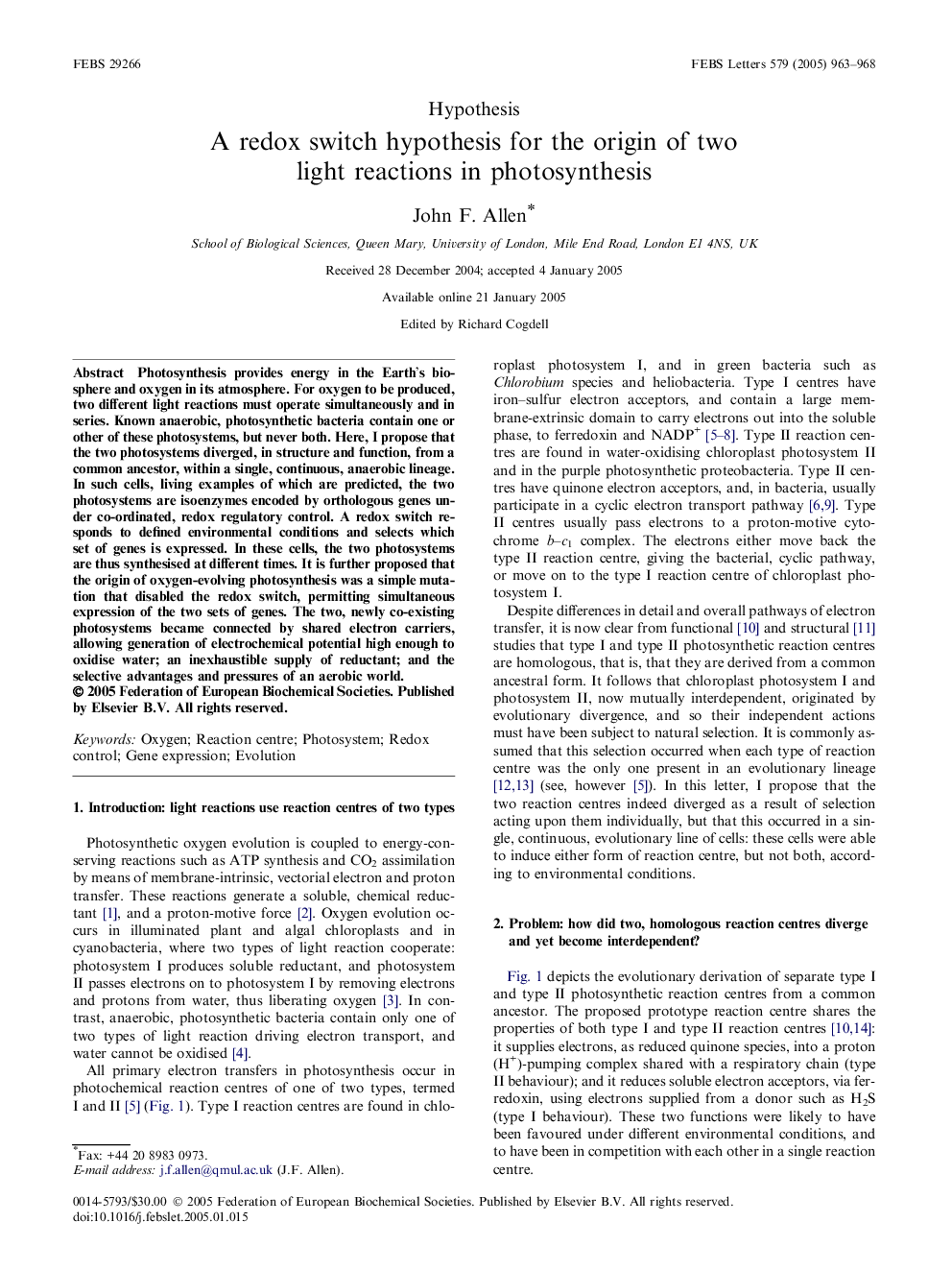| Article ID | Journal | Published Year | Pages | File Type |
|---|---|---|---|---|
| 10873603 | FEBS Letters | 2005 | 6 Pages |
Abstract
Photosynthesis provides energy in the Earth's biosphere and oxygen in its atmosphere. For oxygen to be produced, two different light reactions must operate simultaneously and in series. Known anaerobic, photosynthetic bacteria contain one or other of these photosystems, but never both. Here, I propose that the two photosystems diverged, in structure and function, from a common ancestor, within a single, continuous, anaerobic lineage. In such cells, living examples of which are predicted, the two photosystems are isoenzymes encoded by orthologous genes under co-ordinated, redox regulatory control. A redox switch responds to defined environmental conditions and selects which set of genes is expressed. In these cells, the two photosystems are thus synthesised at different times. It is further proposed that the origin of oxygen-evolving photosynthesis was a simple mutation that disabled the redox switch, permitting simultaneous expression of the two sets of genes. The two, newly co-existing photosystems became connected by shared electron carriers, allowing generation of electrochemical potential high enough to oxidise water; an inexhaustible supply of reductant; and the selective advantages and pressures of an aerobic world.
Related Topics
Life Sciences
Agricultural and Biological Sciences
Plant Science
Authors
John F. Allen,
